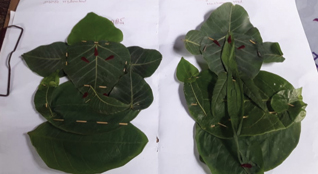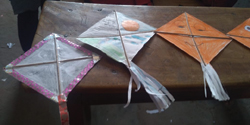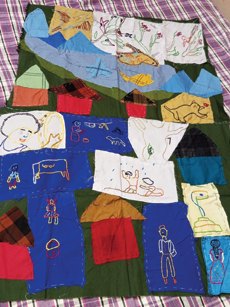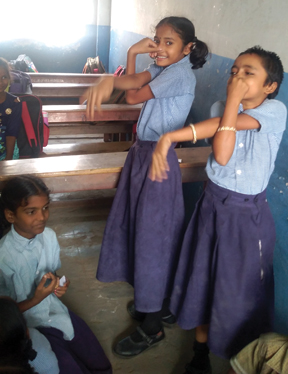G Veena Rao
If there’s a place where you can DO anything you wish to do and BE whatever you want to be, it’s in a story. And that’s because stories have their own way of influencing our thoughts, actions and behaviours. As a child, I thrived on my share of Russian fairytales (Vasillisa the Beautiful, 1981) and Tinkles (Pai, 1980). However, it was only as an adult when I was formally introduced to the world of children through an elective in my MA Education course that it dawned on me that the storybooks I read with such joy as a child were the guiding force behind my current beliefs. That characters from stories close to my heart played captains to the ships that sailed through the low-high tides of my life. With this discovery, I was convinced that stories had the ability to inculcate life skills in children and develop in them, mechanisms to cope with all kinds of situations. That good stories and storybooks made us emotionally strong, empathetic and in general, good human beings. And that was the motivation for me to embark on a journey where I could help children access high quality picture books. My focus predominantly has been on picture books because (a) pictures tell us far more than words possibly can and (b) picture books can communicate even with people who are not familiar with the written word.
The question though was: how does one make such books accessible to children?

The obvious answer was a library. But none of the libraries I had seen had any picture books. Rather, my perception of a library for the longest time ever was that of a space where one could read or study in silence. And it wasn’t until 2017, when I enrolled for the Library Educator’s Course run by Bookworm Goa, that I realized the sheer vastness of the world of “picture books”. For the first time, I saw illustrated children’s books from around the world that dealt with themes as diverse as war, gender, disability, discrimination, death, environment, rights, relationships, adoption, etc. LEC not only helped me discover picture books but also gave me the foundational insights I needed to start a picture book library for children.

My first takeaway from the LEC was that the image of a children’s library as a silent space is passé. A library is meant to be buzzing with creative energy and vibrancy brought on by active engagement. Engagement in this context does not mean ‘reading’ alone. Engagement means an opportunity for children to absorb stories by listening to them, seeing pictures and picture books, reading them, discussing them and then having the opportunity to express themselves however they wish to – through art, craft, theatre, the written or spoken word. In a way, a library should lend meaning to itself by coming alive. With this thought in mind, I wanted to set up a Living Library, a space for children where picture books are brought to life through various kinds of engagements.

I’ve been particularly drawn to the idea of a picture book library because to me, a picture book is the simplest yet the most profound medium to convey a range of human emotions. A common misconception about picture books is that since they are shorter and illustrated, they are easy to read; however in reality, picture books can make very high intellectual and cognitive demands on their readers (Evans, Talking Beyond The Page, 2009). For instance, a wordless picture book like Ammachchi’s Glasses (Kurien, 2017) has the potential to tickle the funny bones of a 6 year-old, pick the curiosity of a 10 year-old and impart lessons to an adult on how to live happily. A picture book like Waiting for Mama (Jun & Seong, 2007) that deals with a sensitive theme of separation (of mother and child) can warm the coldest of hearts. Piggybook (Browne, 1990) has a lesson or two for readers across ages and geographies. The key here however is engagement. Unless there are activities, conversations, discussions in the library that involve children physically, emotionally as well as intellectually, the purpose of the picture book remains unaccomplished. The essence of a picture book library therefore lies in its engagement activities. When library educators or facilitators are trained to enable readers, i.e., children, to read not just words but the pictures accompanying them, children get an opportunity to develop their imagination, creativity and observation skills besides their critical thinking and of course language skills. This was my second takeaway from the LEC – that high caliber picture books hold tremendous potential for engagement. To deprive children of early and crucial interactions with quality picture books is doing them grave disservice in relation to their ability to learn how to respond to texts (Evans, What’s in the Picture?, 1998).

Living Libraries was conceived with the philosophy that children must not just get access to but also have the opportunity to engage with picture books independent of (a) their social status (b) their ability to read or write in English. I initiated the first pilot project along with my LEC course-mate in a Telugu government aided school in Hyderabad where we held library sessions over a period of nine months, using picture books for school children in the age group of 10-16 years. Their comprehension of spoken English was very low. The first challenge for us therefore was to decide whether to introduce Telugu or English picture books to get their attention. The problem however was availability of diverse picture books in Telugu. We therefore used English picture books and facilitated them in Telugu because given the children’s age, we thought they were mature enough to understand and appreciate a wide range of themes offered primarily in English (western as well as Indian publications) picture books.
We soon realized after the first two sessions that the children did not relate to or connect with some western picture books like The Zoo (Browne, 1992) that deals with the idea of imprisonment (freedom) or with concepts like war described in the picture book Red (Kolwankar, 2019). So for the project, we reverted to simple themes like humour, friendship and love that children could relate to and then moved on to more serious topics like disability, rights, etc. This approach seemed to work as the children became more interested in engaging with the books in the school. Alongside the read aloud sessions by the facilitator, the children were given opportunities to engage in discussions on various topics, write and narrate stories, illustrate them and also enact role plays. Many stories were brought to life by children who stitched and embroidered their favourite characters from stories. Paper and clay were some other media used to encourage a child’s artistic expression.

The success of the project came in the form of response from the children who would eagerly look forward to the library sessions and borrow books. Five months into the project, the children took it upon themselves to put together a functional library room in the school. The teachers too played an important role in taking the project forward by raising funds for the purchase of new books for the library, donating stationery and materials for engagement activities, etc. They also gave suggestions for a story festival that was held in the school in February 2020 just before the COVID pandemic.
The lessons we learnt from this pilot project were that:
• Following a structured process is very important while using picture books to successfully engage children who may not know how to read or write. By using a framework to decode and interpret pictures, we can improve their observation skills and logical thinking, although such engagement has its limitations that needs to be navigated.
• Children should first be introduced to familiar themes and stories and slowly moved to complex ideas and unfamiliar themes in order to hold their interest in picture books over a longer period of time.
• List of books must be curated on the go, taking into consideration the children’s likes and dislikes without losing focus on meaningfully engaging children.
• Children should be introduced to a combination of picture books, i.e., simple books that they can read by themselves vs powerful picture books with complex text that must be read aloud/facilitated in the classroom.
To conclude, the single most potent lesson we learnt in theory from the LEC and in practice from our pilot project was that readers render meaning to images and texts. R Barthe, who built on Louise Rosenblatt’s Reader Response Theory, said that the meaning of a text is in the reader, not the author and that ‘the birth of the reader must be at the death of the author’ (Evans, What’s in the Picture?, 1998). Therefore, it’s important for us to acknowledge that we as library educators are instrumental in a reader’s rebirth. And the place to do it is a Living Library.
(With inputs from Anuradha Pachanooru. She is a teacher and library educator based in Telangana. She is the author of many stories including Under the Neem Tree illustrated by A V Illango and published by Tulika. She can be contacted at anuradhap2006@gmail.com)
The author is an HR professional associated with a creative agency in Bangalore. Picture books are her passion and one of her life-goals is to make them accessible to as many children as she possibly can. She can be reached at gvspeak@gmail.com.
